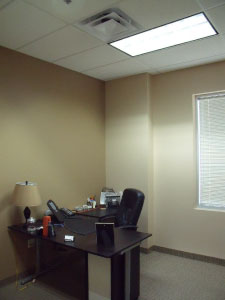Office – 480-621-3818
Fax – 480-621-3822
Read about the change from Edison to LED
Simplifying LED’s
- Energy Efficiency:
LED lights use up to 90% less power than traditional lighting.
LED's are extremely energy efficient, consuming
up to 90% less power than incandescent bulbs. Since LED’s use only a fraction of the energy of traditional light
bulbs, switching to LED lighting options results in a dramatic decrease in energy consumption and costs, saving
consumers electricity and money.
Even though LED lighting has a higher initial cost than incandescent and compact fluorescent lighting the
difference is quickly recouped through the incredible savings in energy, replacement and maintenance costs.
- Environmentally Friendly:
LED lights are made from non toxic & recyclable materials. The long lifespan of LED lights generates less
waste than traditional lighting options. Energy efficiency helps in conserving and preserving energy resources.
LED lighting devices are made from non toxic materials, unlike CFL's & fluorescent lighting which relies on
mercury and can pose a danger to individuals and the environment. LED lighting requires no special handling or
disposal considerations. LED lights are made from recyclable material that can be reused. Longer product life
equals fewer units used over time, requiring the use of fewer resources and the generation of less waste.
- Safety:
LED lights generate virtually no heat. LED’s are safe to the touch and drastically reduce the risk of fires.
Enhanced safety is a tremendous benefit of LED lighting. LED lights generate virtually no heat…we repeat, no heat.
This means LED lights are cool to the touch and can be left on for hours without incident or consequence if
touched. LED’s produce 3.4 btu's/hour and incandescent bulbs produce 85 btu's/hour. The incandescent lights use
far more energy and are forced to expel 90% of energy consumed through heat, making the bulbs incredibly hot to
touch and a fire hazard. Using LED lighting greatly reduces the potential safety risks of burns and fires.
- Color
LED lights are offered in a variety of base colors such as Red, Green, Blue, Yellow, Amber and White.
Traditional incandescent light bulbs use filters to produce colors and a great deal of energy is lost through the
filtering process making them extremely inefficient. LED’s are blended to produce colors, using no filters, and
are extremely efficient. Virtually unlimited color options can be produced through the blending of LED’s making
them incredibly versatile.
- Durability:
LED lights are extremely sturdy and far more resilient than traditional lighting methods.
LED’s are solid state lighting devices that utilize semiconductor materials instead of filaments or neon gas.
An LED light is a tiny chip encapsulated in an epoxy resin enclosure, making LED’s far sturdier than traditional
incandescent light bulbs and fluorescent tubes. LED lights do not use fragile components such as glass and
filaments, so LED’s can more effectively withstand shock, vibration and extreme temperatures.
- Longevity:
The lifespan of LED lights can be up to 50, 000 hours, generating great savings in replacement and maintenance
costs. The use of fewer lights over time reduces the amount of waste burdening our landfills and decreases the
amount of resources used in production and distribution.
Up to 50,000 hours LED Lifespan Scenarios:
If powered 4 hours a day = 34 year lifespan.
If powered 8 hours a day = 17 year lifespan.
If powered 24 hours a day = 5.5 year lifespan.
Key LED Benefits
- Energy efficient, reducing consumption and cost of power.
- Long lasting and durable, drastically increasing the life of each bulb, reducing waste and expense associated with maintenance and replacement.
- Non-toxic and recyclable.
- Low heat emission makes bulbs safe to touch and reduces fire risk.
Office using inefficient & unhealthy standard flourescent bulbs

Same office using safe & efficient LED bulbs

